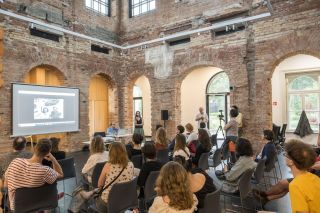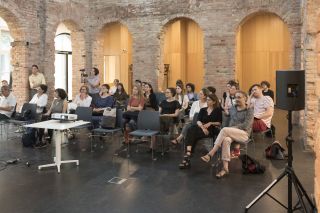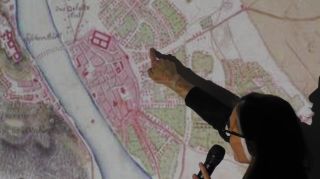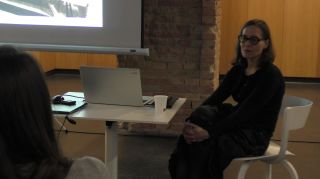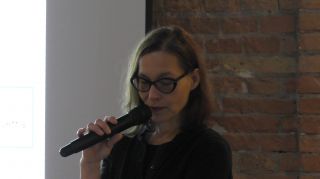The Central European Research Institute for Art History (KEMKI) is launching a six-part series of open lectures from spring 2022 to autumn 2022 related to the history of the building that houses the institute.
The first Israelite hospital of Pest moved in 1889 to the plot enclosed by Szabolcs Street – Dózsa György Road – Nyugati Railway Station. At the beginning of the 20th century, the complex was annexed with the Alice Weiss Postnatal Care Centre and the Bródy Adél Children’s Hospital, the latter named after the wife of Zsigmond Bródy, a newspaper editor who contributed to its construction with a sizable donation. After the nationalisation of the hospital, then its closure and final liquidation in 2007, the main building of the former Bródy Hospital became the home of the Central European Research Institute for Art History (KEMKI), founded as an affiliate of the Museum of Fine Arts. Focusing predominantly on 20th century art, the research institute incorporates the Archive and Documentation Center (ADK), the Artpool Art Research Center and the newly created Research Department. The combined mission of the work of the three departments is to strengthen academic life in Hungary and to represent Hungarian art and art history at a high level on the international scene by initiating and implementing locally focused, regionally and internationally oriented art history research projects and cooperations.
The 2022 KEMKI Open Lectures aims to introduce such topics into the discourse that are related to the memory of the place and offer a methodological extension of art history. The event will address issues such as how the idea of the welfare state at the beginning of the 20th century was linked to disciplinary measures, the regulation of labour and control over the body. How can we explore the instrumentalisation of the female body in the scope of a beauty pageant in the context of the history of mentalities, art and politics? What can we understand about the functioning of psychiatry in the period of state socialism based on police and secret service evidence and interior affairs?
- First event: 27.04.2022., dr. TORONYI, Zsuzsanna: Jewish Community and healing
- Second event: 25.05.2022., K. HORVÁTH, Zsolt: “It would be advisable for all psychologists to deal with their own mental state”
- Third event: 08.06.2022., EPERJESI, Ágnes: Pathos and/or Criticism? The Political and Artistic Instrumentalisation of the Female Body


